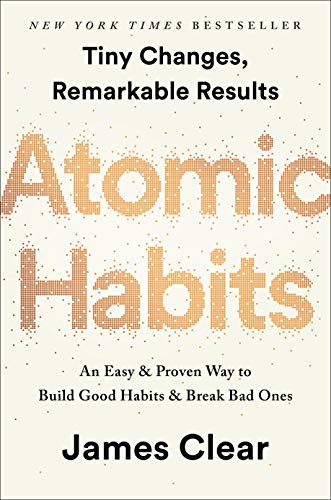The ICE Project Prioritization Model
/ICE Project Prioritization Model
The ICE Prioritization Model is a Project Prioritization technique that Prioritizes Projects based on Impact, Cost, and Ease.
Project Management is one of the 6 key components of a personal productivity system.
A project is an activity that has a beginning and end, contains multiple steps, and creates something new or unique. A project will often involve multiple resources, costs, and require detailed tracking.
But sometimes you may have more projects than you are able to complete. This is where a prioritization method can assist. It will allow you to objectively analyze and prioritize your projects. It will help you to put your projects and the most important to commit your time and effort to complete.
Project Prioritization Approaches:
There are many different possible Project Prioritization approaches you can implement. Let’s look at a few before we discuss the ICE method.
The Eisenhower Matrix:
One Project Prioritization approach is to use the “Eisenhower Matrix" ("Eisenhower Box"). This approach classifies projects based on their “Urgency” and “Importance”. You prioritize activities based on those that are both “Urgent” AND “Important” over others tasks.
Although the Eisenhower Matrix is a useful tool, it best suited for personal tasks and small projects. It does not “scale” well for large lists and does not work well for complex projects, strategic initiatives, or corporate goals.
Financial Models:
Another common approach for selecting projects is to focus on financial impact. Financial models include approaches such as Net Present Value (NPV), Return on Investment (ROI), and Payback Periods.
Although these approaches are well-established in corporate environments, they also have their limitations. They focus solely on the "money side" of the equation (costs vs. revenue). They omit the many "non-financial” reasons for performing projects. For example, projects are performed to implement changes required by new laws or regulations, to prevent losses, or for safety reasons. They are also performed to implement improvements to a firm’s Environmental, Social, or Governance (“ESG”) efforts.
The ICE Scoring Model:
The “ICE Scoring model” is a project prioritization approach that avoids the limitations of financial models. Instead, it focuses on analyzing and scoring projects based on three key values:
Impact, Confidence, and Ease.
Impact:
Impact is the degree to which the project will “move” or “improve” the key metric that is the key target of the project.
Example: The redesign of a firm's E-commerce website is expected to result in an improvement to online ordering revenue. The existing E-commerce website is poorly designed, uses an outdated credit card process, and does not allow tracking of repeat customers. You estimate that a redesigned site will result in a 20% increase in online ordering revenue.
In this example, we give Impact a score of "4" because this project can have a very high impact.
Rating Note: The GREATER the impact, the HIGHER the score. The smaller the impact, the LOWER the score!
Confidence:
Confidence is the level of “certainty” the project will actually result in the predicted impact.
Example: The redesign of the E-commerce website will result in less "abandoned carts" and allow for targeting of repeat customers with special offers. You are fairly confident that the redesign will result in your forecasted increase in sales.
In this example, we give Confidence a score of "3" because we are fairly confident the redesign will result in these increases.
Rating Note: The more confident you are, the HIGHER the score. The less confident you are, the LOWER the score!
Ease:
Ease is your estimated level of “effort” to complete the project. This is a single rating that includes factors such as “cost”, “time”, and “number of resources”. A simple way to think of “Ease” is “how easy will it be to get this project completed”?
Example: The redesign of the E-commerce site is expected to be moderately complex because your existing system is based on old technology. You have a competent E-commerce developer chosen, but they have warned that this will be a complex project.
In this example, we give Ease a score of "2" because this is a fairly complex project.
Rating Note: The simpler the project, the HIGHER the score. The more difficult the project, the LOWER the score!
The ICE Scoring Calculation:
To calculate the ICE Score for each project, follow these simple steps:
For each of your projects, provide a numerical value of 1 through 5 (1=lowest, 5=highest) for each of the three attributes (Impact, Confidence, and Ease).
Multiply each of the 3 scored attributes to create your full ICE Score.
Example:Impact = 4
Confidence = 3
Ease = 2ICE Score: 4 x 3 x 2 = 24
Complete the ICE scoring process for each of your projects. Score each project for the 3 attributes (Impact, Confidence, and Ease) and calculating the resulting ICE Score.
Compare the ICE scores of each project and Select the projects with the highest (largest) ICE scores as your “top priorities”.
Using Excel or Google Sheets to Calculate ICE Scores:
An easy way to perform your ICE analysis is to use Excel or Google Sheets.
Create a 5 column list as follows: Project Name, Impact Score Confidence Score, Ease Score, and ICE Score.
List your projects down the list under the “Project Name” column.
Rate each project food their Impact, Confidence, and Ease Scores on your scale of 1 through 5 (1=lowest, 5=highest). (Note: Use a “formula” in Excel or Google Sheets to calculate the ICE Scores automatically).
Sort the Spreadsheet by the “ICE Score” from High to Low. You will now have a prioritized list of your projects by their ICE scores.
Limitations of the ICE Scoring Model:
No Weighting:
The ICE Scoring model does not use any “weighting”, and each attribute is treated "equally". Although this makes the ICE scoring method quick and simple to perform, it may not be appropriate for every organization.
A simple enhancement is to make the ICE model a bit more robust is to develop "weights" for each of the three attributes and then generate a "Weighted Ice Score". Although it makes the model a bit more complicated to create and score, it may be the "correct approach" for some situations or organizations.
Using a Single Rater or Multiple Raters:
The ICE model uses subjective scoring, typically by a “Single Rater”. As with any scoring model, different people may have very different views as to the "correct scores" for the attributes.
One way to address this limitation is to have multiple people perform the ratings independently. You then collect everyone's ratings and develop an “average score” that is used for the ICE score calculations.
Ratings are Subjective:
In order to have consistent and relative rankings, you must use a consistent set of definitions for rating your attributes.
For example, you must know exactly what a “3” vs a "4" means for “Confidence”. A good approach is to come-up with definitions and examples for each rating level ahead of time to help ensure more consistent ratings. However, this takes some prior planning and pre-work and can slow-down the rating process.
Provides only Relative Prioritization:
ICE Scoring provides a way to compare multiple projects and create a prioritized list. However, it won’t help you to determine how many projects you can actually perform. And it doesn't account for the fact that some projects may be best performed in a specific order or at specific times.
Focusing Too Much on "Safer" Projects:
Bigger impact projects often require larger commitments of resources at higher risks. Relying solely on ICE scores may result in focusing too much on “safer” projects. Sometimes, you need to take some larger risks to generate big returns.
Alternate Versions of the ICE Model:
An alternate version of ICE replaces “Cost” with “Confidence” and uses ‘Effort” instead of “Ease”, so you end up with a model based on Impact, Cost, and Effort. This version may make sense for organizations that need to place a larger focus on these attributes.
Conclusion:
There are many different project prioritization and scoring models available, but the biggest advantage of ICE is its speed and simplicity. The ICE model requires scoring just three attributes (Impact, Confidence, and Ease) for each project, and uses a simple calculation to generate the ICE score for ranking the resulting projects.
You can quickly work through and score a long list of projects and in short-order. In no time, you can create a prioritized list in which to focus your resources and efforts.
However, the simplicity of ICE is also its biggest weakness. Some may find the attributes a bit "subjective". It only assesses relative importance. And it is only as good as the people that are providing the values for its three attributes.

















